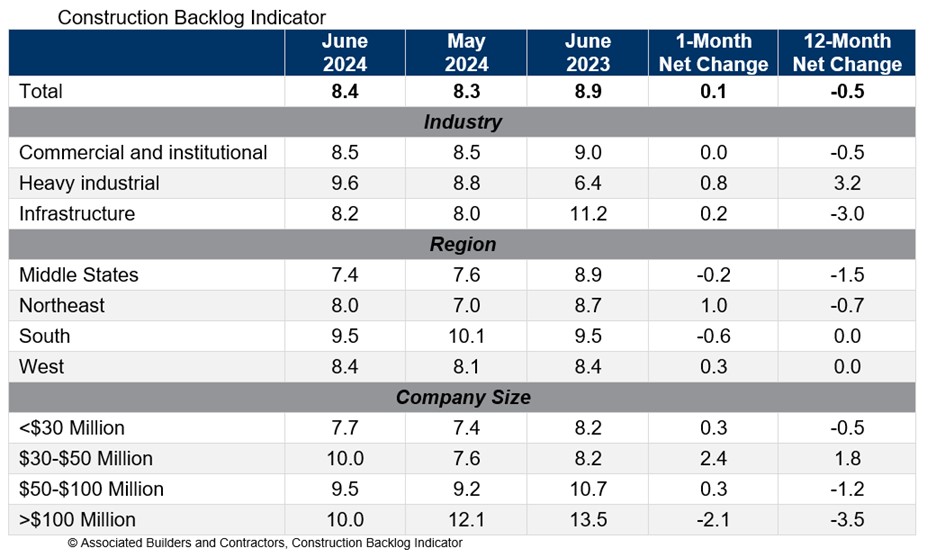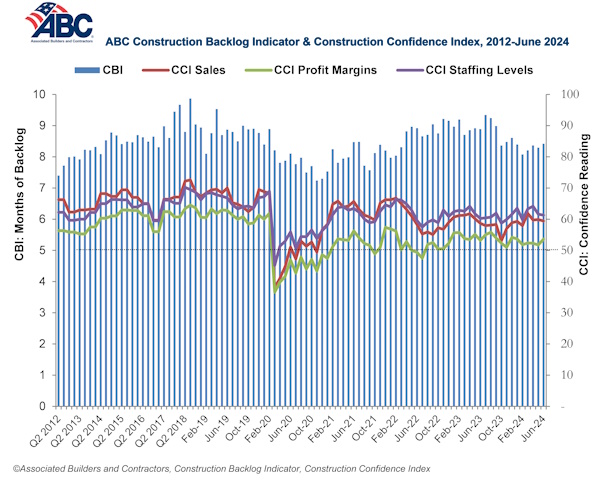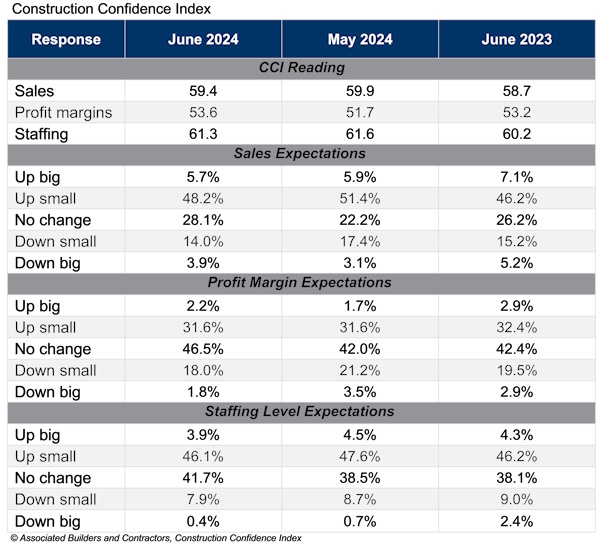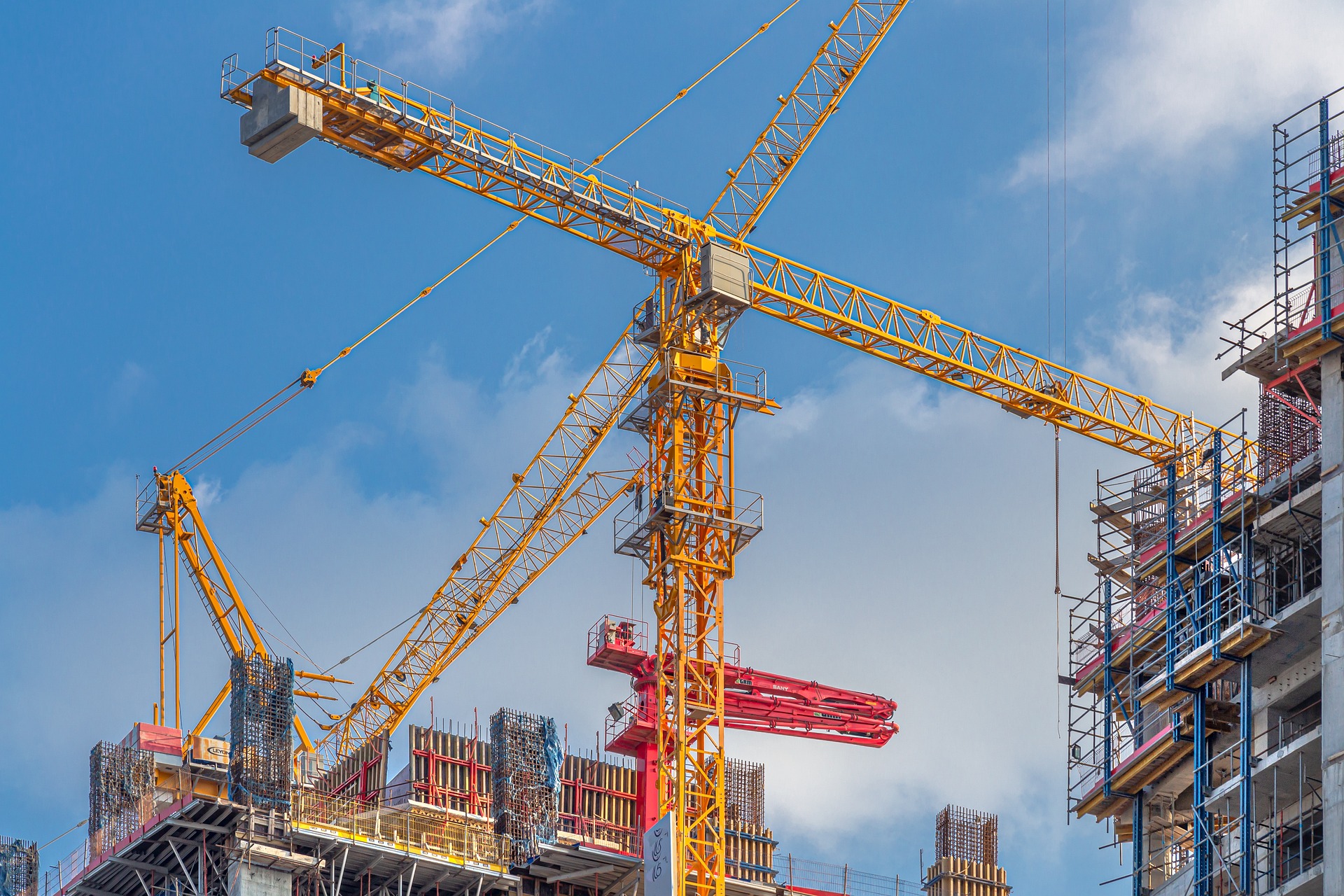Associated Builders and Contractors reported today that its Construction Backlog Indicator increased to 8.4 months in June, according to an ABC member survey conducted June 20 to July 3. The reading is down 0.5 months from June 2023.
View ABC’s Construction Backlog Indicator and Construction Confidence Index tables for June. View the full Construction Backlog Indicator and Construction Confidence Index data series.
The entire decline in backlog observed over the past calendar year is attributable to the Middle States and Northeast. Backlog in the South and West regions was unchanged between June 2023 and June 2024.
ABC’s Construction Confidence Index readings for sales and staffing levels fell slightly in June, while the reading for profit margins improved. All three readings remain above the threshold of 50, indicating expectations for growth over the next six months.

“Backlog continues to hold up remarkably well despite high interest rates, inflation and emerging weakness in the broader economy," said ABC Chief Economist Anirban Basu. “While contractor confidence regarding the outlook for sales and staffing levels fell modestly in June, all three Construction Confidence Index components are higher than they were one year ago.
“The combination of slowing inflation and softening growth suggests that the Federal Reserve may begin to lower interest rates as soon as September,” said Basu. “That will buoy backlog as some of the softer construction segments, like office and commercial, benefit from lower borrowing costs and looser lending standards.”


Related Stories
| Aug 11, 2010
2009 Judging Panel
A Matthew H. Johnson, PE Associate Principal Simpson Gumpertz & HegerWaltham, Mass. B K. Nam Shiu, SE, PEVP Walker Restoration Consultants Elgin, Ill. C David P. Callan, PE, CEM, LEED APSVPEnvironmental Systems DesignChicago D Ken Osmun, PA, DBIA, LEED AP Group President, ConstructionWight & Company Darien, Ill.
| Aug 11, 2010
Inspiring Offices: Office Design That Drives Creativity
Office design has always been linked to productivity—how many workers can be reasonably squeezed into a given space—but why isn’t it more frequently linked to creativity? “In general, I don’t think enough people link the design of space to business outcome,” says Janice Linster, partner with the Minneapolis design firm Studio Hive.







